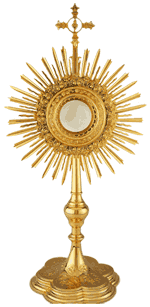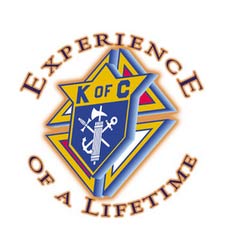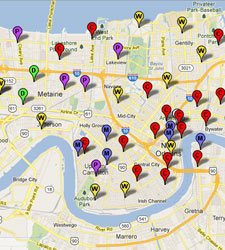Rectory 504-899-1378 | Fax 504-899-0480
School 504-891-1927
ststephenpar@archdiocese-no.org
From the Pastor – July 13, 2025
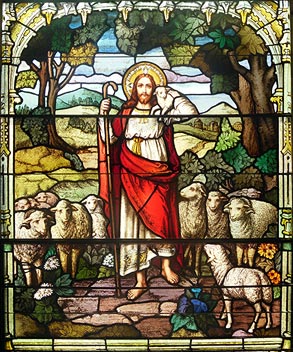 There was a scholar of the law who stood up to test him and said, “Teacher, what must I do to inherit eternal life?” Jesus said to him, “What is written in the law? How do you read it?”
There was a scholar of the law who stood up to test him and said, “Teacher, what must I do to inherit eternal life?” Jesus said to him, “What is written in the law? How do you read it?”
He said in reply, “You shall love the Lord, your God, with all your heart, with all your being, with all your strength, and with all your mind, and your neighbor as yourself.” (Lk 10:25-27)
If you could ask God one question, what would it be? Would you ask about the future? Would you ask for the next Powerball number? Next year’s Superbowl Champion? Or perhaps you’d want to know about something from the past. Why did Katrina hit us? Why did my loved one have to die? Perhaps you’d want to know the answer to something current. Why do bad things happen to good people? What is the cure for cancer?
If there is a more important question than the one the scholar of the law asks, then I can’t think of it. This life is complicated and full of mysteries; but it’s short. The scholar asks the real question: “What must I do to inherit eternal life?” The question is inside each of us.
After Jesus questioned him, the scholar puts together two parts of the Old Testament: we must love God with all our heart, soul, strength and mind (Dt 6:5); and we must love our neighbor as ourselves (Lv 19:18). It’s a summary of the law. But that’s not the end of the story.
“And who is my neighbor?” he asks. Then comes the parable of the Good Samaritan in which Jesus makes it even clearer that love had no limits or boundaries, and likewise our love should have neither. It must be directed to God, but it must be practiced to be real. How can we claim to love a God we can’t see, when we can’t love the neighbor who we do see?
“Love your enemies and pray for those who persecute you” (Mt 5:44), Jesus said. Why? “So that you may be children of your Father in heaven who makes His sun rise on the evil and on the good and sends rain on the righteous and on the unrighteous. For if you love those who love you, what reward do you have? Do not even the tax collectors and sinners do the same? … Be perfect as your heavenly Father is perfect” (Mt 5:46-47).
God’s own unlimited love towards is the standard for our love for each other. Jesus was specific to St. Peter, who asked: “Lord, if my brother sins against me, how often must I forgive? Seven times?” Jesus responded: “Not seven times, but seventy-seven times” (Mt 18:22) and specifically mentioned the Father’s unlimited mercy toward us as the model for our conduct toward others (Mt 18:23-35). It’s a high bar. But it’s the bar Christ gave us. How much do we want eternal life?
(Very Rev. Msgr.) Christopher H. Nalty
msgr.nalty@gmail.com
Masses
St. Stephen
Saturday Vigil at 4:00 pm
Sunday at 8:00 am and 10:30 am
Sunday at 5:00 pm at OLGC
Our Lady of Good Counsel (OLGC)
Center of Jesus the Lord
Charismatic Mass
Sunday at 10 am
Weekdays Masses
Monday – Friday 6:30 am St. Henry
Tuesdays 6:00 pm St. Stephen
First Fridays 6:00 pm Latin Mass
Adoration of the Blessed Sacrament
Tuesdays 4:45 – 5:45pm St. Stephen
Thursdays 7:00 – 8:00am St. Henry
Confession Times at Good Shepherd
Saturdays 3:00 – 3:45pm St. Stephen
Sundays 9:30 – 10:15am St. Stephen
Sundays 10:00 – 10:30am OLGC
First Fridays 6:30 – 7:00pm OLGC
Newsletter Sign Up
Christmas in July!
A Christmas Giving Tree has been set up next to the St. Anthony Statue. St. Vincent de Paul Society would like to be able to offer more dollars and maybe pay an entire utility bill for someone in need. All donations will be designated to assist with an utility bill payment. Take an “ornament” from the tree in the rear of church and return before the end of July. There is no need to buy a present and wrap it; the Society of St. Vincent de Paul will do the rest! God’s blessing to all of you!
Ignatian Volunteer Corps
ENRICH YOUR RETIREMENT – ENRICH THE LIVES OF OTHERS
Are you retired or finished raising your family? Do you want to give back, enrich your spiritual life and build community with other mature adults? Then consider joining the Ignatian Volunteer Corps (IVC) here in New Orleans. At IVC we believe the life experience, wisdom, and skills of 50+ women and men, rooted in Gospel values, can bring justice, and transform the world. For more details, visit our website at ivcusa.org/ivc-offices/welcome-to-ivc-new-orleans, or contact Becky Goff (Regional Director) at bgoff@ivcusa.org.
Solemnity of Peter and Paul
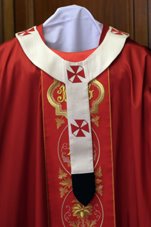 On Sunday, June 29, the Solemnity of Sts. Peter and Paul, Pope Benedict XVI will bestow the pallium on 38 metropolitan archbishops, including 14 from Europe and six from North America. The Americans are: Archbishops Jerome Listecki of Milwaukee, Wisconsin; Dennis Schnurr of Cincinnati, Ohio; and Thomas Wenski of Miami, Florida.
On Sunday, June 29, the Solemnity of Sts. Peter and Paul, Pope Benedict XVI will bestow the pallium on 38 metropolitan archbishops, including 14 from Europe and six from North America. The Americans are: Archbishops Jerome Listecki of Milwaukee, Wisconsin; Dennis Schnurr of Cincinnati, Ohio; and Thomas Wenski of Miami, Florida.
The vestment is called a “pallium,” (plural is “pallia”) and it is a narrow band of cloth woven of white lamb’s wool with a ring in the center which rests on the shoulders of its wearer. The narrow band falls down the front of the chest like a necktie and goes similarly down the back. It is decorated with six black crosses, one on each tail and four on the loop. The pallium has its origin as a liturgical vestment of the Holy Father since at least the 4th century, and it has been given to each Metropolitan Archbishop since at least the 9th century.
Worn by the pope, the pallium symbolizes the plenitudo pontificalis officii (i.e., the “fullness of Pontifical office”). When worn by Metropolitan Archbishops, it signifies the power which the Metropolitan, in communion with the Roman Church, has by law in his own province.
The story of how the pallium is made gives clues to its symbolism. The wool comes from lambs raised by Trappist monks. On, January 21, the Feast of St. Agnes (“agnes” is from the Latin word for lamb), the lambs whose wool is destined for the making of the pallia are solemnly blessed at the Basilica of Saint Agnes. However, during the last three years, the Holy Father has blessed these lambs himself at the Vatican. Wool from these lambs is then given to the Benedictine nuns of the Basilica of St Cecilia in Trastevere, and they weave the pallia. The new pallia are solemnly blessed at the Basilica of St. Peter after the Second Vespers on the feast of Sts. Peter and Paul, and are then stored in a special golden chest located directly above the original tomb of St. Peter. It is called the “Niche of the Pallia.”
If you’re ever at St Louis Cathedral on a Sunday, notice Archbishop Gregory Aymond’s pallium. It’s a great reminder of the universality and long history of our Church.
Corpus Christi Mass and Eucharistic Procession
Sunday, June 22, 2025
All are invited to participate in a Eucharistic Procession immediately following the 10:30am Mass. The procession will exit the Church, turn right on Napoleon Avenue and then go around the school and the church before returning into the church for Benediction. It will be led by a crucifer, and we will chant Eucharistic hymns as we bring carry Jesus in the Holy Eucharist throughout our neighborhood!
We would like to invite First Communicants and young children (K-4th) to wear white attire to lead the procession.
Trinity Sunday
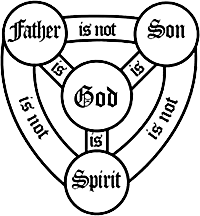
Trinity Sunday, also known as the Solemnity of the Most Holy Trinity, is celebrated a week after Pentecost Sunday in honor of the most fundamental of Christian beliefs—belief in the Holy Trinity. We can never fully understand the mystery of the Trinity, but we can sum it up in the following formula: God is three Persons in one Nature. The three Persons of God—Father, Son, and Holy Spirit—are all equally God. They cannot be divided. As the above diagram shows, each person of the Holy Trinity is a separate person, having been identified as such in the Holy Bible, but each are also the One True God. It’s why we make the sign of the cross in the Name of the Father and the Son and the Holy Spirit, rather than the “names.” It’s a profound mystery that many other religions reject. It’s not something that is easily explainable, but it was revealed by Jesus Christ through His Divine Word, and the Holy Spirit has filled our hearts and minds to help us understand it. We reinforce our belief in the Holy Trinity each time we make the sign of the cross.
The origins of the celebration of Trinity Sunday go back to the Arian heresy of the fourth century, when Arius denied the divinity of Jesus Christ by denying that there are three Persons in God. To stress the doctrine of the Trinity, the Fathers of the Church composed prayers and hymns that were recited on Sundays as part of the Divine Office, the official prayer of the Church. Eventually, a special version of that office began to be celebrated on the Sunday after Pentecost, and the Church in England, at the request of St. Thomas à Becket (1118-1170), was granted permission to celebrate Trinity Sunday. The celebration of Trinity Sunday was made universal by Pope John XXII (1316-34).
For many centuries, the Athanasian Creed was recited at Mass on Trinity Sunday. While seldom read today, the creed can be read privately or recited with your family to revive this ancient tradition.
Kateri Tekakwitha
July 14, 2025
First Native American Saint
On Sunday, October 21, 2012 the Holy Father, Pope Benedict XVI canonized the first Native American Saint, Kateri Tekakwitha. St. Kateri was born in 1656 near Auriesville, New York, the daughter of a Mohawk warrior and a Christian mother. At the age of four, smallpox attacked Tekakwitha’s village, taking the lives of her parents and baby brother, and leaving Tekakwitha an orphan. She was adopted by her two aunts and an uncle, and although forever weakened, scarred, and partially blind, Tekakwitha survived. The brightness of the sun blinded her and she would feel her way around as she walked.
When Tekakwitha was eighteen, Father de Lamberville, a Jesuit missionary, came to Caughnawaga and established a chapel. Her uncle disliked the “Blackrobe” and his strange new religion, but tolerated the missionary’s presence. Kateri vaguely remembered her mother’s whispered prayers, and was fascinated by the new stories she heard about Jesus Christ. She wanted to learn more about Him and to become a Christian.
Kateri’s family did not accept her choice to embrace Christ. After her baptism, Kateri became the village outcast. Her family refused her food on Sundays because she wouldn’t work. Children would taunt her and throw stones. She was threatened with torture or death if she did not renounce her religion. Nevertheless, Kateri remained steadfast in her faith, and lived a life dedicated to prayer, penitential practices, and care for the sick and aged. Every morning, even in coldest winter, she would be waiting at 4:00am when the chapel was opened, and she remained there until after the last Mass. She was devoted to the Eucharist and to Jesus Crucified. Her motto became “Who can tell me what is most pleasing to God that I may do it?”
Tekakwitha’s baptismal name is Catherine, which in the Iroquois languages is Kateri. Her second Iroquois name can be translated as “one who walks groping for her way” (because of her faulty eyesight).
Kateri died on April 17, 1680 at the age of twenty-four. She is known as the “Lily of the Mohawks.” Devotion to Kateri is responsible for establishing Native American ministries in Catholic Churches all over the United States and Canada. Kateri was declared Venerable in 1943 and was beatified in 1980 by Blessed Pope John Paul II. Hundreds of thousands have visited shrines to Kateri erected at both St. Francis Xavier and Caughnawaga and at her birth place at Auriesville, New York. Pilgrimages at these sites continue today.
St. Kateri’s Feast Day is July 14. She is the patroness of the Native Americans and the environment.
Feast of Our Lady of Mount Carmel – July 16
Our Lady of Mount Carmel is the title given to the Blessed Virgin Mary in her role as patroness of the Carmelite Order. The first Carmelites were Christian hermits living on Mount Carmel in the Holy Land during the late 12th and early to mid-13th century. They built in the midst of their hermitages a chapel which they dedicated to the Blessed Virgin, whom they conceived of in chivalric terms as the “Lady of the place.” Our Lady of Mount Carmel was adopted in the 19th century as the patron saint of Chile, in South America.
Since the 15th century, popular devotion to Our Lady of Mount Carmel has centered on the Scapular of Our Lady of Mount Carmel, also known as the Brown Scapular, a sacramental associated with promises of Mary’s special aid for the salvation of the devoted wearer. Traditionally, Mary is said to have given the Scapular to an early Carmelite named Saint Simon Stock. The liturgical feast of Our Lady of Mount Carmel is celebrated on 16 July.
The solemn liturgical feast of Our Lady of Mount Carmel was probably first celebrated in England in the later part of the 14th century. Its object was thanksgiving to Mary, the patroness of the Carmelite Order, for the benefits she had accorded to it through its difficult early years. The institution of the feast may have come in the wake of the vindication of their title “Brothers of the Blessed Virgin Mary” at Cambridge, England in 1374. The date chosen was 17 July; on the European mainland this date conflicted with the feast of St. Alexis, requiring a shift to 16 July, which remains the Feast of Our Lady of Mount Carmel throughout the Catholic Church. The Latin poem “Flos Carmeli” (meaning “Flower of Carmel”) first appears as the sequence for this Mass.
The Orans Posture
The Latin word “orans” is translated as “one who is praying.” The “orans posture” is praying while lifting up one’s hands. This posture of prayer has a Scriptural basis in First Timothy: “I desire, then, that in every place the men should pray, lifting up holy hands without anger or argument.” (1Tim. 2:8).
The orans posture was common in early Christianity and can be seen in early Christian art. Several of the early Church Fathers saw it as “the outline of the cross.”
The General Instruction of the Roman Missal (the “rubrics,” or rules for the celebration of the Mass) references the orans posture with the phrase “with hands extended.” It is instructed to be done twenty-eight times and is used as a direction only for the priest; the laity are never directed to pray “with hands extended.”
Among the laity this practice reemerged with the charismatic renewal in the 1970’s. Used first in private prayer, it has worked its way into the Liturgy. It is a legitimate gesture to use when praying, as history shows; however, its use as a private gesture in the Mass can conflict with the system of signs which the rubrics are intended to protect.
There are some priests that instruct the faithful to assume the orans posture at Mass during the recitation of the Our Father. This is incorrect. The Constitution on the Sacred Liturgy states that: “no person, even if he be a priest, may add, remove, or change anything in the liturgy on his own authority.” If a handful of people are innocently praying in the orans posture during the Our Father, most priests are not going to go out of his way to embarrass them or cause them to feel uncomfortable. Their action is probably not a distraction to anyone around them, but it is not part of the rubrics of the Mass.
Gift of the Holy Spirit
According to the Catechism of the Catholic Church, the Seven Gifts of the Holy Spirit are gifts which assist us in furthering our sanctification and help “complete and perfect the virtues of those who receive them.” The term “gift” means that the Holy Spirit bestows them; they are supernatural gifts operating in a supernatural manner. They are not gifts one simply invokes in times of emergency. The gifts are enumerated in Isaiah 11:2-3.
The Seven Gifts of the Holy Spirit are:
Wisdom – The gift of wisdom allows us to see God at work in our lives and in the world. For the wise person, the wonders of nature, historical events, and the joys and sorrows of our lives take on deeper meaning.
Understanding – The gift of understanding allows us to comprehend how we should to live as a follower of Jesus Christ. A person with understanding is not confused by the conflicting messages in our culture about the correct way to live. Similar to “common sense,” the gift of understanding perfects a person’s speculative reason in the apprehension of truth. St. Thomas Aquinas described it is as a gift “whereby self-evident principles are known.”
Counsel (Right Judgment) – The gift of right judgment allows us to see the difference between right and wrong, and to choose to do what is right. A person with right judgment avoids sin and lives out the values taught by Christ. This gift of truth allows the person to respond prudently and happily to God’s commandments.
Fortitude (Courage) – The gift of fortitude allows us to overcome our fears and to be willing to take risks as a follower of Christ. A person with courage is willing to stand up for what is right in the sight of God, even if it means accepting rejection, condemnation, or even physical injury and death. Courage gives us the firmness of heart to do good and endure evil.
Knowledge – By the gift of knowledge, we understand knowledge of the meaning of God’s Revelation, especially as expressed in the life and words of Jesus Christ. A person with knowledge is always learning more about Scriptures, Sacred Tradition and the teachings of the Church. It is not simply an accumulation of facts and figures.
Piety (Reverence) – With the gift of piety or reverence, have a deep sense of respect for God and the Church. A person with reverence recognizes our total reliance on God and comes before God with humility, trust, and love. St. Thomas Aquinas wrote that Piety “is the gift whereby, at the Holy Spirit’s instigation, we pay worship and duty to God as our Father.”
Fear of the Lord – Fear of the Lord is more closely related to “awe,” and allows us to be aware of the glory and majesty of God. A person with wonder and awe knows that God is the perfection of all we desire: perfect knowledge, perfect goodness, perfect power, and perfect love. This gift is described by St. Thomas Aquinas as a fear of separating oneself from God. He describes the gift as a “filial fear,” like a child’s fear of offending his father, rather than a “servile fear,” that is, a fear of punishment.
The gifts of the Holy Spirit are something for which we need to pray. We beg the Holy Spirit to give us these gifts! And here is a good traditional prayer:
O Lord Jesus Christ, Who, before ascending into heaven, didst promise to send the Holy Ghost to finish Thy work in the souls of Thy Apostles and Disciples, deign to grant the same Holy Spirit to me, that He may perfect in my soul the work of Thy grace and Thy love.
Grant me the Spirit of Wisdom that I may despise the perishable things of this world and aspire only after the things that are eternal, the Spirit of Understanding to enlighten my mind with the light of Thy divine truth, the Spirit of Counsel that I may ever choose the surest way of pleasing God and gaining Heaven, the Spirit of Fortitude that I may bear my cross with Thee, and that I may overcome with courage all the obstacles that oppose my salvation, the Spirit of Knowledge that I may know God and know myself and grow perfect in the science of the Saints, the Spirit of Piety that I may find the service of God sweet and amiable, the Spirit of Fear that I may be filled with a loving reverence towards God, and may dread in any way to displease Him. Mark me, dear Lord, with the sign of Thy true disciples and animate me in all things with Thy Spirit. Amen.
Home Middle #3 Widget
This is a widgeted area which is called Home Middle #3. It is using the Genesis - Featured Page widget to display what you see on the Metric child theme demo site. To get started, log into your WordPress dashboard, and then go to the Appearance > Widgets screen. There you can drag the Genesis - Featured Page widget into the Home Middle #3 widget area on the right hand side. To get the image to display, simply upload an image through the media uploader on the edit post screen and publish your page. The Featured Page widget will know to display the post image as long as you select that option in the widget interface.
Copyright © 2025 Good Shepherd Parish · New Orleans WordPress site hosting and maintenance provided by Amaze Media | Privacy Policy

